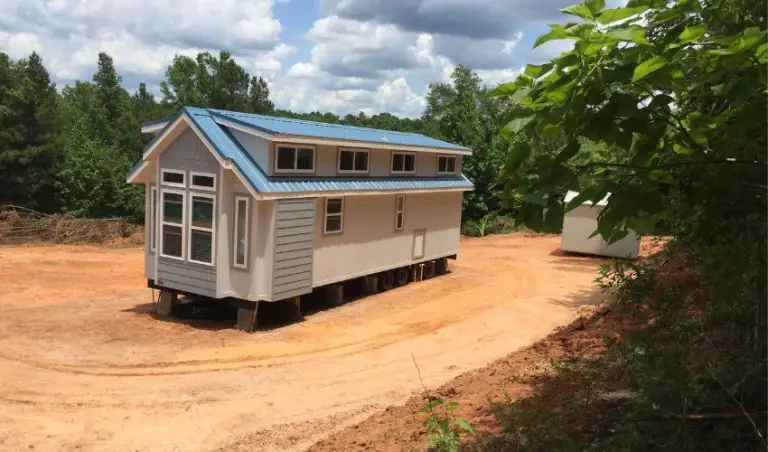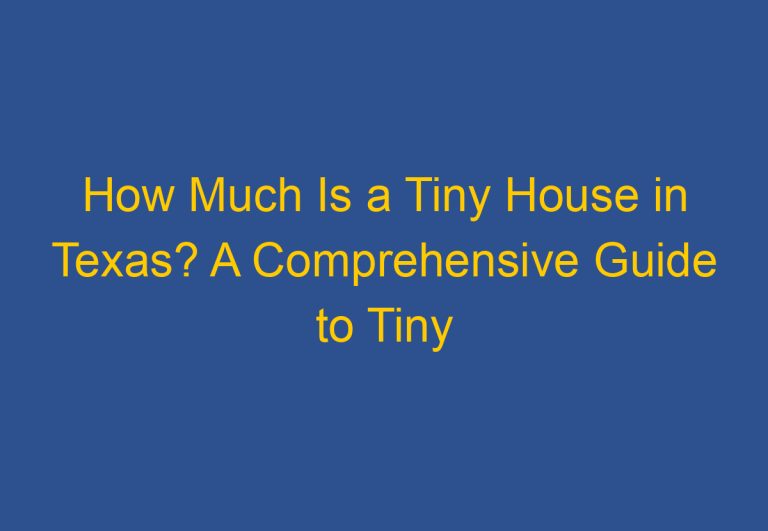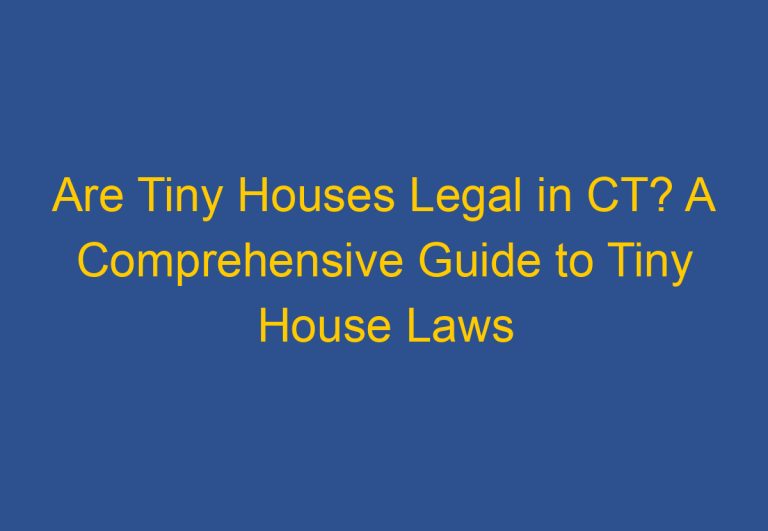How Tall Are Tiny Houses: A Comprehensive Guide
Tiny houses have become increasingly popular in recent years, largely due to the tiny house movement and the principles of minimalism. These small dwellings offer a unique way of living, allowing people to downsize and simplify their lives. One of the most common questions people have when it comes to tiny houses is how tall they can be.
The answer to this question is not a straightforward one, as there are a few different factors that can impact the height of a tiny house. Generally speaking, most tiny houses are designed to be no taller than 13.5 feet, as this is the maximum height requirement for a house on wheels traveling like a camper or trailer. However, there are some exceptions to this rule, and some tiny houses may be taller if they are built on a foundation rather than on wheels.
It’s important to note that the height of a tiny house is just one of many factors that must be considered when designing and building one. While some people may prefer a taller tiny house for added living space, others may prioritize portability and opt for a shorter design. Ultimately, the height of a tiny house will depend on a variety of factors, including the owner’s needs and preferences, the building materials used, and local building codes.
Design and Dimensions of Tiny Houses
Understanding Tiny House Sizes
Tiny houses are becoming increasingly popular as people seek to downsize and simplify their lives. These small homes can range in size from under 100 square feet to around 400 square feet. The design of a tiny house is often based on the needs of the owner and can be customized to fit their lifestyle.
Tiny House Height Considerations
When it comes to tiny house dimensions, height is an important consideration. Most tiny houses are built on a trailer, which means they need to be under a certain height to be road legal. The standard height for a tiny house on wheels is 13.5 feet, which includes the height of the trailer and the house itself.
It’s important to note that some states have different regulations when it comes to tiny house height. For example, in California, the maximum height for a tiny house on wheels is 13.6 feet. It’s important to check with your local building department to ensure you are following the regulations in your area.
Interior Layout and Vertical Space
One of the biggest challenges when it comes to designing a tiny house is making the most of the limited space available. This means utilizing vertical space as much as possible. Many tiny houses have loft spaces that can be used for sleeping or storage.
Interior walls can also be used creatively to separate living areas and create a sense of privacy. For example, a sliding door can be used to separate the living area from the bathroom.
When designing a tiny house, it’s important to consider the overall layout and how each space will be used. The goal is to create a comfortable and functional living space that feels modern or rustic depending on the owner’s preferences.
In conclusion, tiny houses come in a variety of sizes and designs, but they all share the common goal of maximizing space. When it comes to height, most tiny houses are built to be under 13.5 feet to be road legal. Vertical space is utilized in creative ways to create a comfortable and functional living space.
Legal and Practical Aspects of Tiny House Construction
When it comes to constructing a tiny house, there are several legal and practical aspects that one must consider. This section will explore some of the most important factors that come into play when building a tiny house.
Zoning and Building Regulations
One of the most significant challenges that tiny house builders face is zoning and building regulations. Zoning laws and building codes vary from state to state and even from city to city, making it difficult to know what is allowed and what is not. In general, most municipalities require a minimum square footage for a house, which can pose a challenge for tiny houses, which are usually under 400 square feet.
Before beginning construction, it’s essential to verify the local square footage requirements and any zoning ordinances that may apply to your tiny house project. Doing so will ensure that you are building a legal and safe structure that meets all the necessary regulations.
Transportation and Mobility
Another critical aspect of tiny house construction is transportation and mobility. Many tiny houses are built on trailers, which means they must be designed to be mobile. To avoid special permits to move them, a tiny house on a trailer must be no wider than 8 feet, 6 inches, no longer than 40 feet, and shorter than 13.5 feet tall.
Builders must ensure that the tiny house is constructed with materials and construction methods that can withstand the rigors of transportation. They must also consider the maximum height of the tiny house to ensure that it can safely navigate under bridges and overpasses.
Materials and Construction Methods
The materials and construction methods used in tiny house construction are also essential. Builders must use materials that are lightweight, durable, and energy-efficient. Common materials used in tiny house construction include plywood, insulation, and windows.
Builders must also consider the cost of materials and construction methods. While it may be tempting to cut corners to save money, doing so can compromise the safety and durability of the tiny house.
In conclusion, building a tiny house requires careful consideration of several legal and practical aspects. By taking the time to understand zoning and building regulations, transportation and mobility, and materials and construction methods, builders can construct a safe, legal, and durable tiny house that meets their needs and budget.
Frequently Asked Questions
What is the maximum height allowed for a tiny house on wheels?
According to U.S. transportation regulations, most tiny houses on wheels have a standard exterior height of approximately 13.5 feet tall. This ensures that the small home can safely travel beneath bridges and through tunnels.
What are the common dimensions for a tiny house floor plan?
Tiny houses typically range from 100 to 400 square feet, with most falling between 200 and 300 square feet. The most common dimensions for a tiny house floor plan are 8.5 feet wide by 20 to 24 feet long.
What is considered the average ceiling height inside a tiny house?
The average ceiling height inside a tiny house is around 6 to 7 feet, depending on the design and layout. However, some tiny homes can have higher ceilings to create a more spacious feel.
How does the square footage of a tiny house compare to regular homes?
The square footage of a tiny house is significantly smaller than that of a regular home. While the average American home is around 2,600 square feet, a tiny house typically ranges from 100 to 400 square feet.
What are the size limitations for a structure to be classified as a tiny house?
There are no specific size limitations for a structure to be classified as a tiny house. However, most tiny homes are designed to be under 400 square feet to qualify as a tiny house.
Are there standard size requirements for tiny houses in terms of square meters?
There are no standard size requirements for tiny houses in terms of square meters. However, most tiny homes fall between 10 and 40 square meters.










